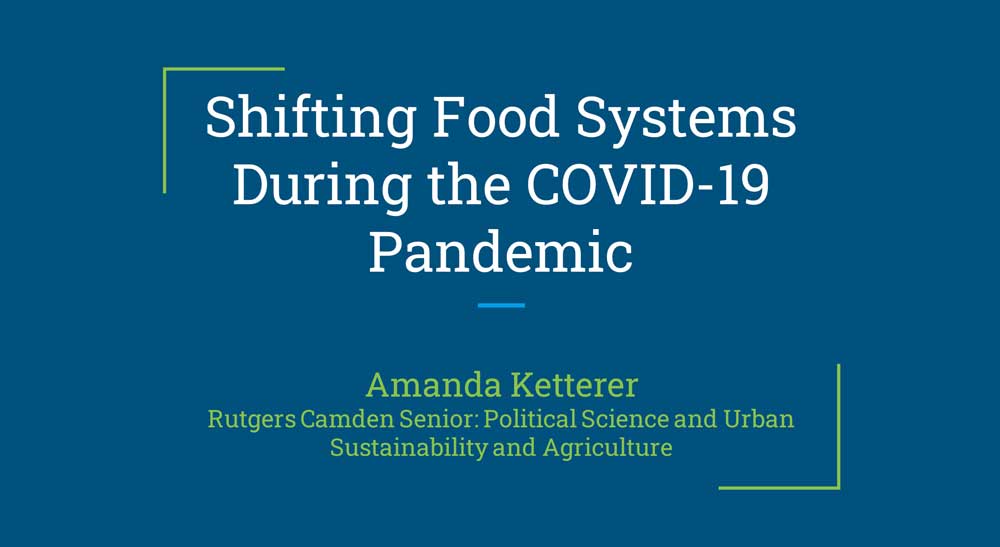Amanda Ketterer ‘21
Majors: Political Science and Urban Sustainability and Agriculture
Affiliations: Civic Scholars, Institute of Leadership and Action
Faculty Mentors: Mr. Michael D’Italia, Director of Student Success, Dr. Simanti Lahiri, Office of Civic Engagement, and Dr. Xenia Morin, Associate Teaching Professor in the School of Environmental and Biological Sciences at Rutgers University–New Brunswick
Abstract
The formation of the North American food system has a balanced cycle that incorporates production, consumption, and removal throughout several steps and levels. Though this system employs, supports, and feeds millions of Americans; it also skips over underserved communities and does not reach the residents of food insecure locations or “food deserts”. These regions that are deemed food insecure have been among the hardest hit through COVID-19 case load, economic crisis, and an increasing food insecure population. These populations typically consist of minority and immigrant residents who already suffered from lack of access to markets, grocery stores, and healthcare before the pandemic began.
This thesis was written, researched, and composed between March 2020 to December 2020 throughout the COVID-19 pandemic, which has affected over 17 million United States citizens, killing over 317,000 as of 2 PM on December 20, 2020. This pandemic has affected individuals from all walks of life, however, it has come with different comorbidities that are not listed as a symptom of the virus itself. Unemployment, food insecurity, loss of educational resources, and an ever-growing mental health crisis are among the many factors at stake that the pandemic has brought. This paper will focus on the city of Camden, New Jersey which resides just outside of Philadelphia. Camden is a city that has struggled with a heroin epidemic, political machines breaking down communities, gentrification, and several other plagues that have taken economic and personal growth from the residents of this underserved city. With cases rising in Camden County; Camden city has taken the majority of the caseload of southern New Jersey due to the dense populations and an increased need to use public transportation daily rather than a personal vehicle. This paper will work to identify the issues, physically map them, and analyze the solutions Camden County has taken to resolve them.
Preview

